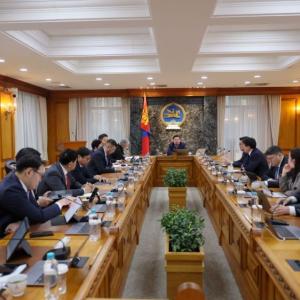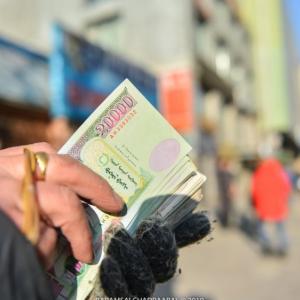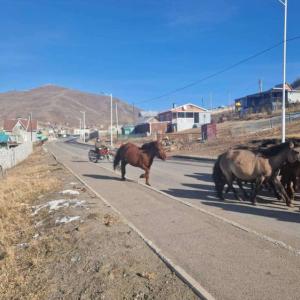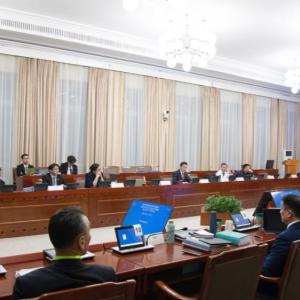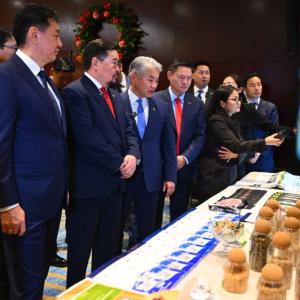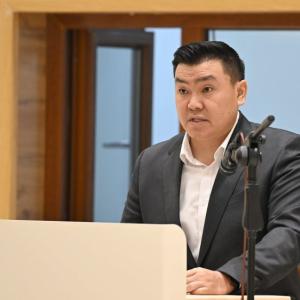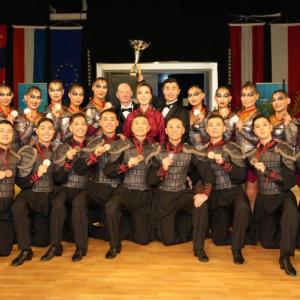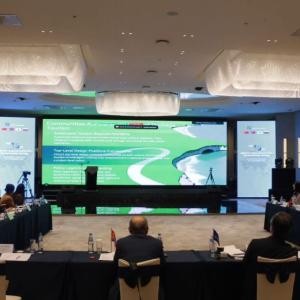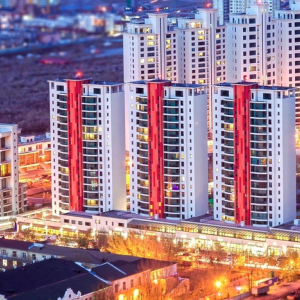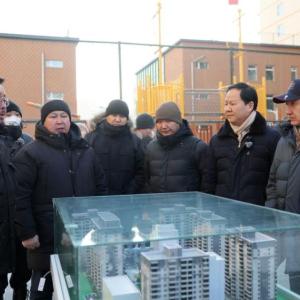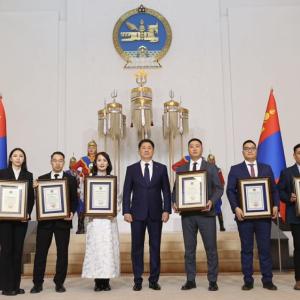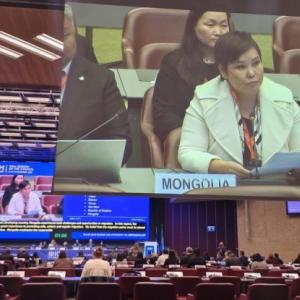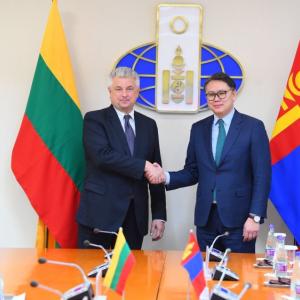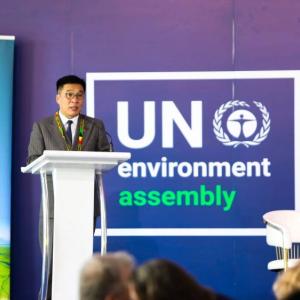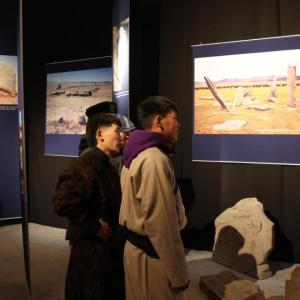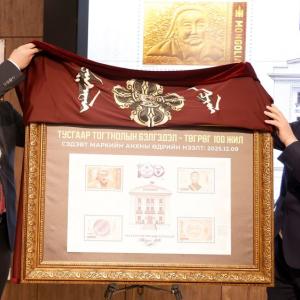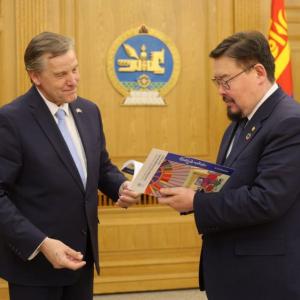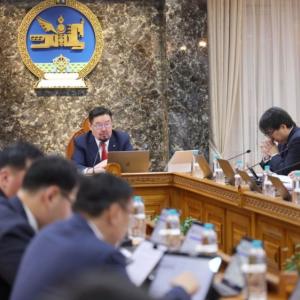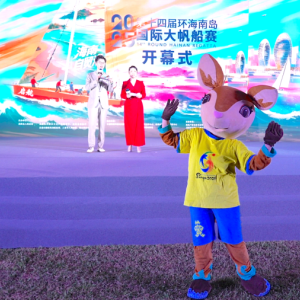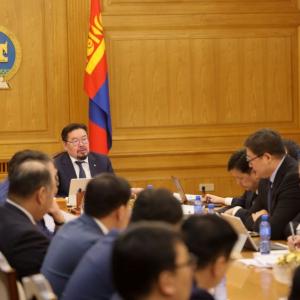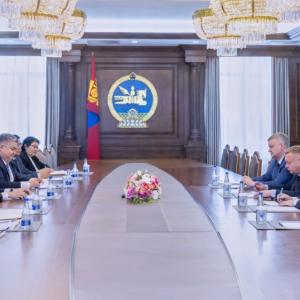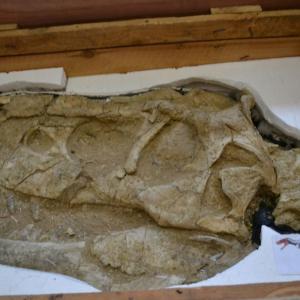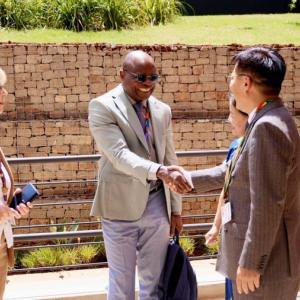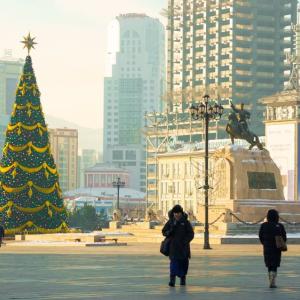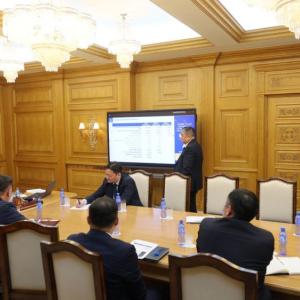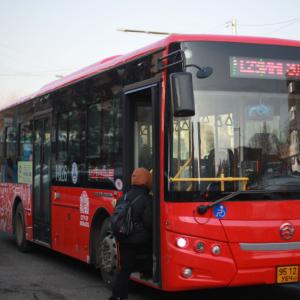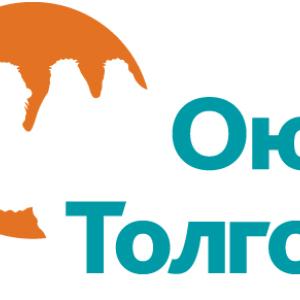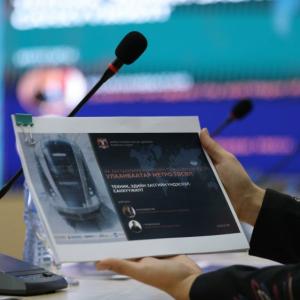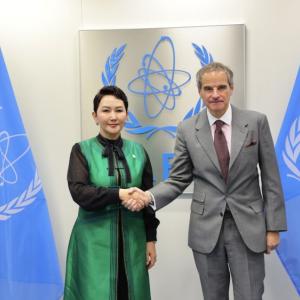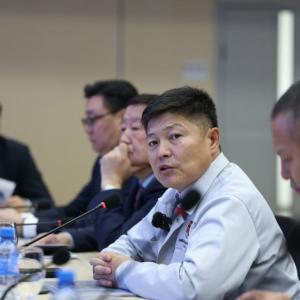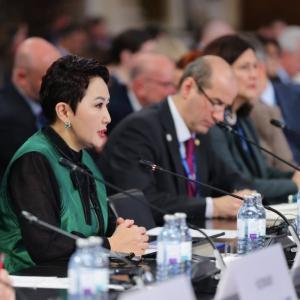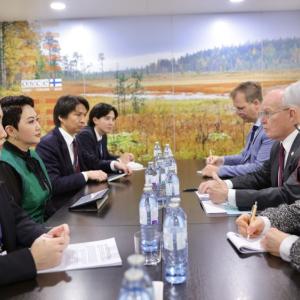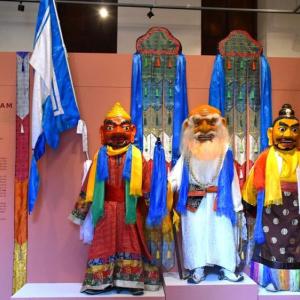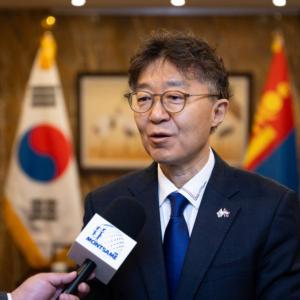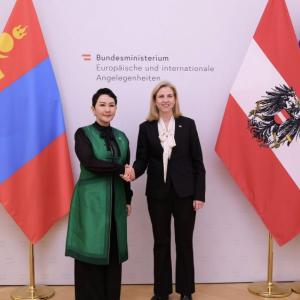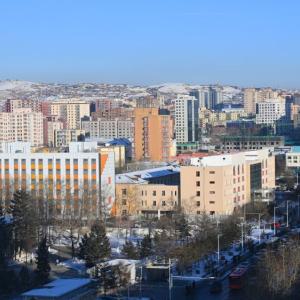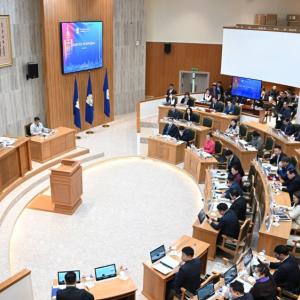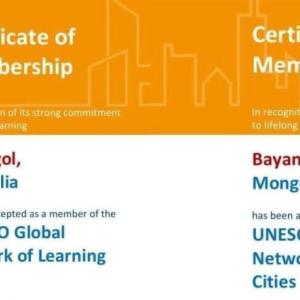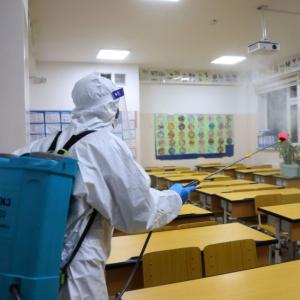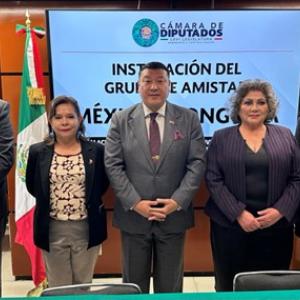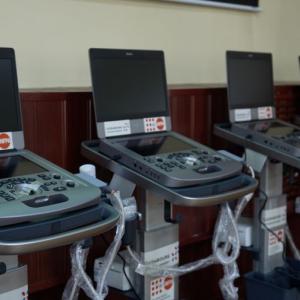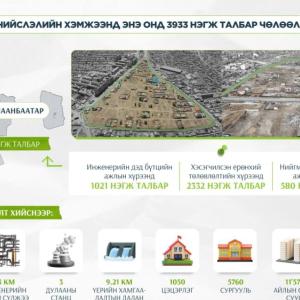Tsoggerel Gonchig: National Arts Is Mongolia’s Cultural Immunity
Society
-In Observance of World Art Day-
Ulaanbaatar, April 15, 2025 /MONTSAME/. Today is World Art Day, an international celebration of the fine arts proclaimed by the International Association of Art (IAA) to promote global awareness of creative activity. On this occasion, MONTSAME Mongolian National News Agency spoke with Tsoggerel Gonchig, Honored Worker of Art of Mongolia and Director of the Mongolian Grand Theatre of National Arts.
First of all, thank you for accepting our invitation and agreeing to give this interview. Over its more than 70-year history, the Mongolian Grand Theatre of National Arts has undergone several name changes. Since 2016, it has adopted its current name. With this new official name, can we understand that the Theatre’s operations, the structure and composition of its artists, as well as its repertoire, have expanded?

The Mongolian Grand Theatre of National Arts was originally known by the beautiful and widely beloved name “The People’s Song and Dance Ensemble,” a name cherished by the public and defined by its artistic heritage. Truly, there was no one unfamiliar with this ensemble. Its very foundation was laid by great pioneers, and many splendid singers such as Lkhamjav Baatar, Norovbanzad Namjil, Adarsuren Peljee, Banzragch Dagiiragchaa, as well as numerous accomplished musicians and dancers were born. Today, the Grand Theatre comprises three Ensembles: a Dance Ensemble named after the People's Artist of Mongolia, Laureate of the State Premium and legendary choreographer Sevjid Tserendulam, a Music Ensemble named after Murdorj Luvsanjamba —who initiated the modern era of the Mongolian State Grand National Orchestra’s traditional music—and a Long Song Ensemble named after the Hero of Labour of Mongolia, People's Artist of Mongolia, Laureate of the State Premium, and the Legendary Mongolian traditional long-song singer Norovbanzad Namjil. I deeply honor “The People’s Song and Dance Ensemble.” Later, in the late 1980s, it was renamed the National Academic Ensemble of Song and Dance. I took up the post of Director of this institution in 2012.
Naturally, as we move forward into a new era, we must foster new development. Given its large personnel, and its role as the first major center dedicated to preserving national heritage, it was appropriate that it be officially titled “Mongolian Grand Theatre of National Arts.” The Government of Mongolia approved our proposal to rename as Mongolian Grand Theatre of National Arts.
While ensembles like “Tumen Ekh,” “Ulaanbaatar Ensemble,” and “Zuki House” have about 20-30 members, ours has a total of some 200 employees.
It’s often noted that our Mongolian State Grand National Orchestra is one of the few such orchestras in Asia. Could you please elaborate on this?
The word “National” is very significant. It means it’s composed of truly Mongolian instruments and embodies our national heritage. Scholars say that the origins of a Mongolian National Grand Orchestra go back almost two thousand years. During the Yuan Dynasty under Khubilai Khaan, there were reportedly about 500 musicians who formed a National Grand Orchestra performing at the imperial court.
Today, the Mongolian State Grand National Orchestra is nearing its 70th anniversary. Our State Grand National Orchestra, named after Murdorj Luvsanjamba, is the face of Mongolia, composed of around 70 musicians. Recently, this orchestra became a trailblazer in Asia by performing in the Berlin Philharmonic. This concert hall, coveted by musicians worldwide, seats 2,500 and is famed for its acoustics. We took about 60 members there. We revived the 13th-century history of the Yuan Dynasty through music, melodies reflecting historic progress, cultural pride, and distinguished Mongolian traditions. Audiences came from France, Belgium, Italy, Hungary, Austria, and other countries. As Mongolians, we were filled with pride, the pride in being born Mongolian, in our cultural heritage. The audience, listening silently and emotionally, with tears welling up, enjoyed works by our great composers Sharav Byambasuren, Jantsannorov Natsag, Birvaa Gonchig without making a single sound. They were truly moved.
This shows that our composers have reached the human heart with their music. Our orchestra’s performance was at such a high professional level that there was not a single flawed note in that hall, where even the slightest mistake would be audible.
When I recorded it on my phone and shared it, people said it gave them goosebumps. Our young principal conductor, E. Munkhbayar, created a musical miracle on that stage. The chief conductor of the German Philharmonic even officially invited him to conduct his orchestra.
Wow, that’s something to be truly proud of!
Yes, it was amazing. After the performance, the audience’s reaction and the feedback expressed to our artists made it clear just how remarkable our State Grand Orchestra truly is. I believe that on every State Visit by the President of Mongolia made this year so far, our accompanying State Grand National Orchestra fulfilled its role and earned the gratitude of guests.

I heard it was a performance to be immensely proud of. We’ll continue talking about that. As you mentioned earlier, considering our history, the Great Khaans must have had extraordinary ceremonial court music. In the 18th and 19th centuries, Mongolian aristocrats are said to have maintained their own music ensembles and orchestras. It’s believed that such a rich national heritage has been wonderfully embodied in this orchestra. How have the distinctive regional styles and nuances been preserved?
The Mongolian Grand Theatre of National Arts is responsible for safeguarding and carrying forward the artistic legacy of the various ethnic groups and nationalities of all 21 aimags of Mongolia. Whether it’s in music, dance, or song, we officially incorporate all these elements. Why? Because this is our cultural immunity, our shield that protects our independence. As you said, we never lose sight of the unique mannerisms, styles, dialects, and customs of our 21 aimags in our artistic work. The legendary Sevjid Tserendulam’s “Mongol Bujgiin Chuulbar” [Anthology of Mongolian Dance] has been leading the way for 60 years. His son, Hero of Labor of Mongolia Sukhbaatar Sevjid, continued his father’s work, choreographing many exquisite dances. And who performs all this inherited wealth of dance culture today? It is our State Grand Theatre — our national music, dance, and song divisions that uphold Mongolian classical folk heritage, housed within the Mongolian National Grand Theatre of Arts.
During State Visits of foreign Heads of State to Mongolia, our dance, song, and music divisions perform in their full lineup. Building on that foundation, the President of Mongolia has made great efforts to ensure the construction of a new, state-of-the-art professional theatre equipped with the latest innovations and stage technology. This project is now moving forward.
When is the construction of this new Mongolian Grand Theatre of National Arts scheduled to be completed?
It is generally expected to be completed by the end of 2027.
You mentioned the tradition that reflects local characteristics among your artists. How well is that tradition preserved nowadays?
In the dance division of the Mongolian Grand Theatre of National Arts, many dancers are from Dornogobi aimag. Master Sevjid Tserendulam himself was from Dornogobi, which served as a kind of nucleus. Even now, there is a children’s theatre named after Sevjid Tserendulam in Dornogobi aimag, continuing to produce dancers. In fact, about 70-80 percent of our dance division’s members hail from Dornogobi.
As for the Urtiin Duu [traditional Mongol long song], it inevitably traces back to Dundgobi aimag. However, in recent times, long-song singers have also emerged from Khuvsgul, Sukhbaatar, Uvs, and many other aimags. Our throat singers mainly come from Chandmani soum in Khovd aimag, an area known as the cradle of multiple ethnic traditions. Of the four throat singers in our Grand Theatre of National Arts, three are from Chandmani and one from Umnugobi aimag. These regional roots and characteristics are a defining feature of our Grand Theatre of National Arts.

The Mongolian Grand Theatre of National Arts also participates in state ceremonies and travels abroad for State Visits, performing in many countries. Where have you performed internationally?
Historically, the very first Mongolian folk arts ensemble to perform internationally, stepping onto global stages, was the People’s Song and Dance Ensemble. It performed in European countries with Sevjid Tserendulam in 1995 and 1996. In the subsequent generation, Sukhbaatar Sevjid’s group traveled and performed throughout the Americas in the 2000s. In the 1990s-2000s, Norovbanzad Namjil even toured worldwide. From that legacy, we see today’s Mongolian artists emerging on the global arena, such as The Hu band. Two or three of The Hu’s instrumentalists were originally our Ensemble’s morin khuur [traditional Mongol Horse-Head Fiddle] and limbe [flute] players. Dashdondog Bayarmagnai, the founder of The Hu is from Chandmani soum. You see the regional connection again. By blending throat singing with rock music and forging a new style, The Hu stands out in the global arena.
Our dance performances are always in high demand. When we took the State Grand National Orchestra to Germany recently, there was a great desire to see our dances. The choreography and music of our dances possess a powerful psychological impact, speed, strength, and a unique energy that touches the soul. That’s why I’m thinking of taking our dance division abroad starting next year. You know, the National Naadam Festival of Mongolia wouldn’t be complete without the Mongolian National Grand Theatre of Arts.
Indeed, it’s unimaginable.
Exactly, unimaginable. The 2020 Naadam broadcast on television, directed by B. Baatar was truly wonderful. The Mongolian Grand Theatre of National Arts participated in its entirety.
It was truly wonderful.
I myself served as the artistic director for that televised production. Also, the stage production “Tamgagui Tur” [The Throne Without a Seal], performed in England and Singapore as “The Mongol Khan”, can trace its roots to the Mongolian Grand Theatre of National Arts. Our dancers originally invested their sweat and effort into that work. Director B. Baatar, with his keen eye, adapted this dance for the 2020 Naadam television program. Later, we brought these 40 dancers to London’s famous Coliseum Theatre for “The Mongol Khan” and performed 17 times. This marked a breakthrough for our dancers onto the world stage.
Our dancers also participate in international competitions, often winning top awards, correct?
Yes, they have won Grand Prix and other competitions in Central Asia. Our dancers are truly skilled. I’m proud of our dancers, proud of our musicians, and proud of our singers. I often think about how to manage these three divisions of the Mongolian National Grand Theatre of Arts so as not to impose a heavy financial burden on the state.
I worked in the private sector, where I founded the “Khuvisal” [Evolution] production company. In 2018, during the tenure of Mongolia's current President as Prime Minister, I made a request: “Could we stop pooling cultural and artistic income into a central fund and instead manage and utilize our earnings independently? It might not be a large amount, but even small sums can make a big difference.” I made this appeal because institutions that generate revenue and share it directly with their artists can achieve significant benefits. This approach allows institutions to cover their maintenance and equipment costs without relying on state funding. The decision was approved in 2018 and implemented in 2019. As a result, our institution helped the first 15–20 of our team members make down payments on their apartments. This initiative has been a tremendous boost for Mongolia’s cultural and artistic community. To date, approximately 198 individuals have benefited. It’s essential to support our artists to ensure we don’t lose them.
This has truly been a compassionate initiative that enables artists to work steadily in their professional fields.
Exactly. As the one who must firmly stand behind these 200 people, fostering their talent and developing their abilities, it’s my responsibility to ensure they have the most favorable working environment, beneficial regulations, and a strong financial foundation. I’m striving and working hard to maintain those conditions.

Earlier, we touched on a wonderful topic before we paused: your performance in the Federal Republic of Germany. Playing in the main hall of the Berlin Philharmonic is not a common opportunity. I understand they have very strict standards. How were you selected to perform on that stage?
We performed on the occasion of the 50th anniversary of diplomatic relations between Mongolia and Germany. Thanks to the combined efforts of many individuals, such as the Foreign Minister of Mongolia B. Battsetseg, Minister of Culture of Mongolia Ch. Nomin, Composer B. Chinbat, Cultural Envoy of Mongolia Ts. Gerlee, and Ambassador Extraordinary and Plenipotentiary of Mongolia to Germany B. Mandakhbileg, we were given the opportunity to perform in that prestigious hall.
It’s a venue renowned for its exceptional acoustics and very high artistic standards. We performed in three cities in Germany. Nuremberg’s hall, seating about 1,800, was also very beautiful. We even staged a full 30–40-minute performance at Frankfurt Airport. Promoting ourselves internationally is crucial, and as a result of that performance, the Ambassador Extraordinary and Plenipotentiary of Mongolia to Belgium, Bold Luvsanvandan, extended an invitation for us to play in Luxembourg, Belgium, and France in 2025. I think that will also come to fruition.
Your orchestra is the first from Asia to perform in the Berlin Philharmonic?
Indeed, the Grand National Orchestra was the first from Asia to be granted permission to play there. No Asian orchestra had performed in that hall before us. We brought the full ensemble. Previously, we performed in Belgium with about 25 people. At that time, Belgian city officials were amazed at how large our full ensemble is when complete. A full lineup conveys our full artistic vision and intent. Performing at the Berlin Philharmonic has effectively become our calling card, our certificate of excellence. It was an enormous step forward.
German music critic Volker Tarnow, writing about your Berlin performance, began his review by referencing the 1241 Mongol “Great Storm,” stating that “we may not know that storm today, but it certainly has never been as tranquil as what we experienced at the Berlin Philharmonic this Tuesday.” It seems your concert conveyed the great serenity of Mongolia. What was the concept and message of the performance?
The concert was titled “Mongoliin Saikhan Ekh Oron” [Beautiful Mongolia], based on the major work of Choidog Eregzen. Within “Beautiful Mongolia,” there are many great and renowned pieces. Breaking it down, you have “Jalam Khar” [Jalam, the Black Horse], “Altan Urguu” [The Golden Palace], “Khadagtai Mendchilgee” [The Greetings with Blue Ribbon], and other melodies that greet everyone. Each of these compositions stands as a complete work on its own. The famous “Jalam Khar” dance melody is truly remarkable. So, the “Beautiful Mongolia” performance was dominated by works from our immensely talented creators. I have to say, our performance was indeed gentle and tranquil. In Europe, I discovered an audience with a highly developed musical sense—people who can truly listen, appreciate, and experience wonder. They recognized our music’s value. I’m delighted our musicians had the opportunity to understand their own artistry within the realm of great musical traditions.
Germany, of course, has produced many world-renowned composers and musicians. It is a cradle of supreme musical education.
Yes, Germany is at the heart of the world’s finest musical traditions.
Please share about your performance at Frankfurt Airport?
MIAT Mongolian Airlines and the Mongolian Grand Theatre of National Arts are both serving Mongolia in their own ways. Since we landed there, we supported MIAT’s operations by performing a 30–40-minute show. People of many nations, arriving from all over the world, were amazed. Taking pictures and videos, they learned about Mongolia and MIAT. It was a beautiful joint effort.

You mentioned that many came to see your performances in Germany, including many Mongolians living abroad.
I was very moved, to the point of tears. Some people have lived abroad for ten or twenty years and their emotions ran high. Music and art truly bring people home, mentally and emotionally. Hearing our music, they might have been transported back to when they were 18 years old, riding horses, drinking fresh airag [mare’s milk], drawing water from a well, herding cattle—reliving their nomadic childhood. Mongolians are nomadic people, and the sound of Mongolian instruments can instantly bring back these memories.
Our traditional instruments, such as the Ever Buree [horn-shaped trumpet] fashioned from real horn and the Yatga [traditional plucked zither], all played that day. Visitors came from Hungary, France, and Austria as well—many had booked rooms at nearby hotels just to attend our performance. Older attendees, in particular, were deeply moved. When Sharav Byambasuren “Setgeliin Egshig” [Melody of the Soul] played, some openly wept.
I heard the Mongolians came dressed in traditional Mongolian deels?
Yes, everyone wore deel. When “Mandukhai Tsetsen” [Mandukhai the Wise] played, there were many tears. Even though I have listened to these pieces many times, hearing them in that grand setting moved me profoundly. Truly great art remains always magnificent.
Hearing this is making my eyes well up, and I’ve seen Mongolians commenting online that it truly was a magnificent performance. We are having a wonderful conversation. What are the future goals of the Mongolian Grand Theatre of National Arts? I understand that by 2025, you will be touring many places again, moving and inspiring audiences with your performances.
In 2025, our institution will celebrate its 75th anniversary. Turning 75, we plan to stage our largest and best production yet, showcasing three different eras of our institution’s history: the People’s Song and Dance Ensemble, the National Academic Ensemble of Song and Dance, and the Mongolian Grand Theatre of National Arts. For our 75th anniversary, we have set out to create many remarkable new projects. First, we will publish beautiful books. We are also planning to stage William Shakespeare’s “Romeo and Juliet” purely in the form of Mongolian music and dance. We are considering structuring it so that about 40 percent is traditional Mongolian dance, 10 percent classical dance, 10 percent ethnic contemporary dance favored by young people, and possibly 10 percent hip-hop elements. This is because “Romeo and Juliet” is a story of adolescents, roughly 13 to 18 years old. Next year has been declared the Year of Youth by the Government of Mongolia, so we want to present Mongolia’s proud cultural heritage to modern young audiences. For instance, playing the balcony scene of Romeo and Juliet on an Ever Buree will create a uniquely beautiful sound. We can represent Juliet’s character through the magnificence of Mongolian dance. Second, by doing “Romeo and Juliet” this way, we offer a completely new perspective on a classic piece. I produced the National Naadam Festival in 2019 and directed the state concerts for three years, so I’ve come to envision things from a producer’s perspective. We have many such plans. Back in 2013, I initiated and staged the dance drama “Mongoliin Ikh Khatad” [The Great Mongol Queens]. So, when our new grand theatre building opens, I’m thinking of creating a work titled “Mongoliin Khaad” [Mongol Khaans.]
Thank you very much. May the creative team of your institution, which serves as a wellspring of Mongolian culture and promotes our nation and its artistry to the world, achieve ever greater success in your future endeavors.
Thank you very much, and I extend my gratitude to the esteemed MONTSAME Agency team for inviting me for an interview. I rarely give interviews because I believe something truly valuable must maintain a certain level of quality and discernment. I wish your team the best of success in your work.

 Ulaanbaatar
Ulaanbaatar







